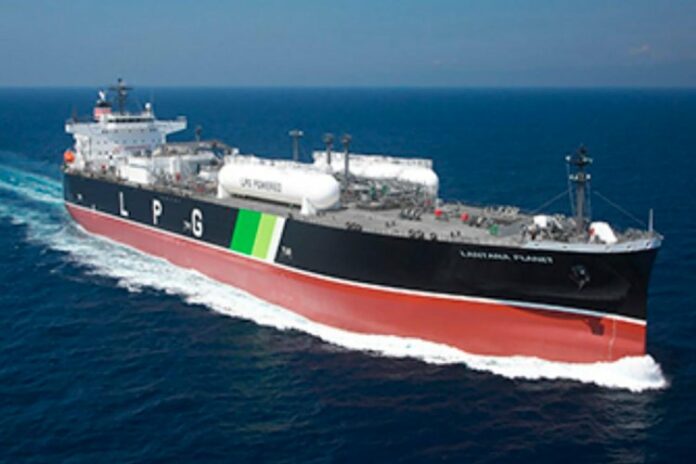Kawasaki Heavy Industries has delivered the 84,000 m3 capacity liquefied petroleum gas (LPG) carrier LANTANA PLANET (Kawasaki hull No. 1754) for Nippon Yusen Kabushiki Kaisha. This is the 69th LPG carrier built by the company.
This vessel is a dual-fuel LPG carrier using LPG and low-sulfur fuel oil, and their fourth 84,000 m3 LPG carrier adopting a dual-fuel main engine.
In recent years, in order to effectively reduce emissions of greenhouse gases from international shipping, more vessels are adopting liquefied gases as an alternative to heavy fuel oil on a global scale. This very large LPG carrier is powered by LPG, which reduces greenhouse gas emissions and is expected to significantly reduce environmental impact. It is the fruit of the Kawasaki Group’s accumulated knowledge in building LPG and liquefied natural gas (LNG) carriers, and LNG-fueled vessels.
Kawasaki plans to develop and build more LPG-fueled LPG carriers, LPG/NH3 carrier, and other commercial vessels that meet environmental standards, as well as to develop and offer other eco-friendly marine technologies, to contribute to the establishment of a low-carbon/decarbonized society. These products include vessels for transporting liquefied hydrogen, considered to be the next-generation energy source.
Specifications
- Length overall 229.90 m
- Molded breadth 37.20 m
- Molded depth 21.90 m
- Molded draft 11.60 m
- Speed Approx. 17.0 kn
- Crew complement 30
- Gross tonnage 49,943 T
- Deadweight 55,153 t
- Cargo tank capacity 84,169 m3
- Main engine One set of Kawasaki-MAN B&W 7S60ME-C10.5-LGIP diesel engine
- Classification/country of registration Nippon Kaiji Kyokai (ClassNK) / Panama
- Delivery date January 23, 2023
This LPG carrier operates using both LPG and low-sulfur fuel oil. Use of LPG as fuel greatly reduces emission volumes of sulfur oxides (SOx), CO2 and other pollutants compared with use of marine fuel oil. In this way, the new vessel will meet SOx emission standards which were strengthened in January 2020, and EEDI Phase 3 regulations which will further strengthen CO2 emission standards.



